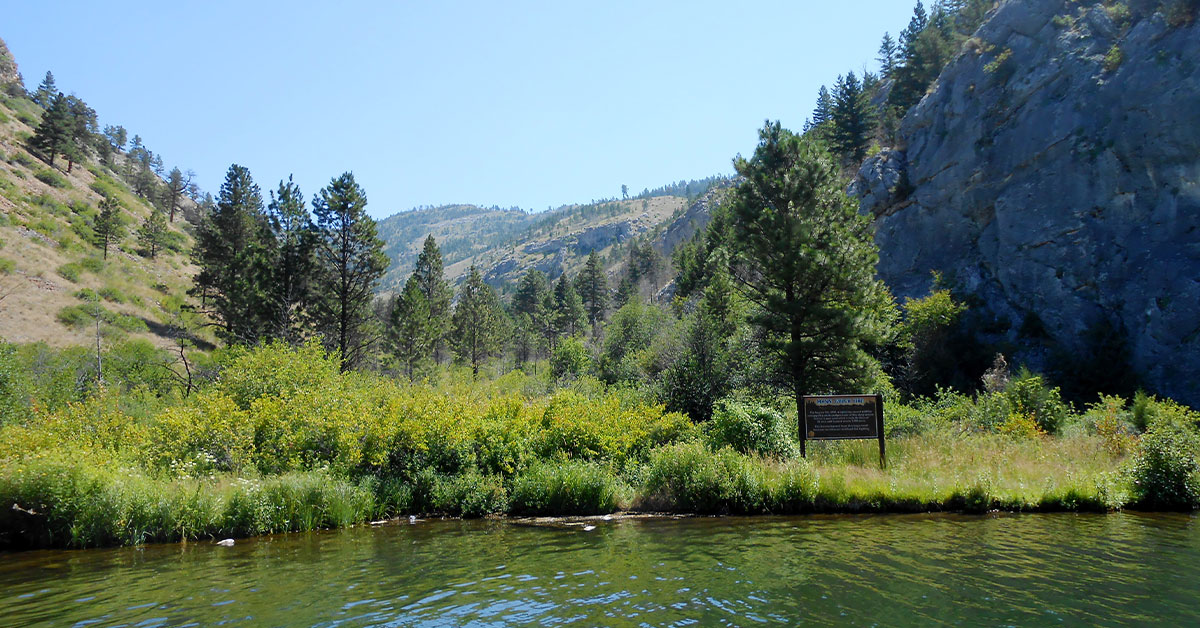Normalizing Field Conferences
Walking is Better Than Zooming
By Alison Berry, Steve Bick and Holly Fretwell
As we look towards a post pandemic world, don’t be surprised if, after the initial pleasing aspect of in-person person meetings wears off, you begin to see the drawbacks in this format. Beyond the inevitable realities of having to change out of pajamas and leave the house, meetings are not always the best use of time. Although it is nice to connect with colleagues, we all remember tedious staff meetings and seemingly endless conferences with insufficient time for both discussions and networking. “Save all your questions for the end” is the ultimate buzzkill for collegial discussion.
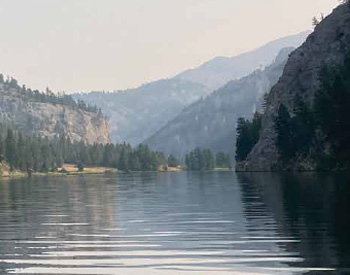
How about an actual walk in the woods instead? What if, rather than sitting in front of the screen to Zoom or in an auditorium with hundreds of others, your next meeting or conference is a lively discussion with interactive learning while exploring a new environment? The basic concept is not new – imagine a grown-up version of the field trips that we experienced in our school years. The unique spin to the idea is to value the experience on par with a formal conference or meeting.
On a recent outing, the four of us ex-changed ideas on worthwhile topics through-out the day using the landscape to inform and enhance our discussions.
The back story is this: On August 5, 2021, four forestry-minded professionals set out for a day hike into Mann Gulch, on the Helena-Lewis and Clark National Forest in Montana. It was the 72nd anniversary of the tragic Mann Gulch fire that claimed the lives of thirteen young men, familiar to many as the subject of Norman Maclean’s classic book, Young Men and Fire. Although each of us had explored nearby sites, none of us had previously made the hike into Mann Gulch.
The group included four transplants to Montana, with common interests in local geography and various backgrounds in the field of forestry. Holly Fretwell, the lone western native, is originally from Washington State, and has spent her adult life living and working in Montana, researching and writing on public land and forest policy issues. Nate Anderson grew up in New Hampshire and now works as a research forester with the US Forest Service’s Rocky Mountain Research Station in Missoula. Originally from Massachusetts, Alison Berry is a natural resource research consultant with Woodland Resources in Bozeman, Montana. Steve Bick is a private sector forestry consultant in New York, spending part of each year in Montana. He pretends to be a part-time Montanan (at least when he’s not pretending to be a Vermonter).
This was the first time the four of us had met as a group, though we have worked together in various combinations in the past. While our common interest in the Mann Gulch tragedy brought us together, we had much more to talk about.
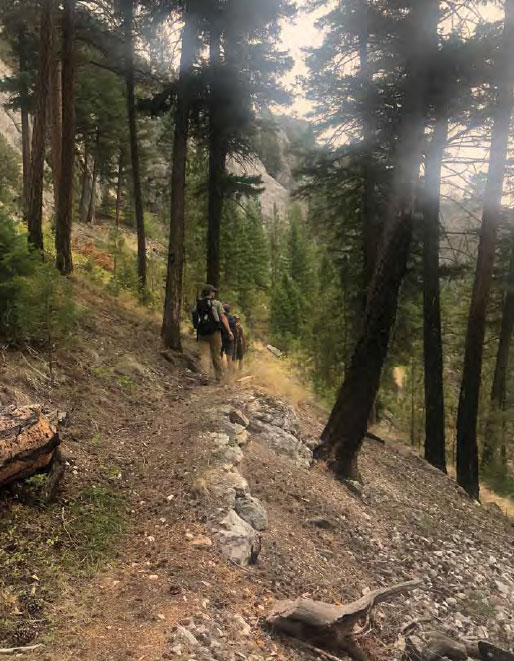
For a more typical conference or professional meeting, one might send out an announcement to a hundred people, only to have twenty people sign up. At the conference, only a fraction of attendees will gain valuable insight that they can apply to their work. When field experiences are integrated into conferences, they are often disconnected from discussion and presentations as pre- or post-sideshow tours.
Why not take a more selective approach, and assemble a group that is sure to benefit from the experience, and who you would like to exchange ideas with?
For the Mann Gulch hike, Steve took the initiative to invite a group that would provide a stimulating discussion. He also arranged a few logistics to make sure the trip would go smoothly. Mann Gulch is accessed via a short boat trip down the Missouri River, with a shuttle service offered at nearby Gates of The Mountains Marina on Holter Lake near Helena, Montana. Marina owner and Mann Gulch fire expert, Tim Crawford, met us and shared some of his stories about the site, including his visits with fire survivor Bob Sallee and with author Norman Maclean (both of whom are now deceased).
We hopped into a small boat and motored down river to the entrance of Mann Gulch and arranged for a pickup upstream at the base of Meriwether Canyon later in the afternoon. The day was hot, and skies were clouded by smoke from distant fires. As our boat shuttle headed back to the marina, the group hiked into the canyon to explore and learn about Mann Gulch.
Over the course of the day, we probably had an equal amount of time hiking and stopping to talk. As the group rotated, each person got to know each of the others, and learn about their work and interests. The hiking resulted in what would be called breakout sessions at a typical conference setting, but with spontaneous topics to perfectly fit the common interests and expertise of the participants.
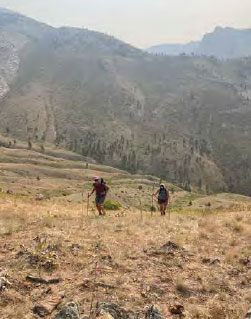
We had ample time to discuss topics like water rights, wildfire policy, forest operations, and incentives for harvesting timber and reducing fuel loads. We spoke about the tradeoffs involved with risking firefighter lives for protection of forest resources such as those in Mann Gulch in 1949.
As we climbed into the gulch, we noted that the forest had not regenerated to match what had existed prior to 1949. Interpretive signs with historical photos showed the gulch had previously hosted a relatively dense forest. Today, the north side of the gulch was mostly an open meadow, with few scattered pines.
Eventually we reached the stone monuments marking the sites where each victim’s body was found. Walking the hillside where lives were lost gave us perspective on what happened there. Still, we struggled to imagine what the firefighters would have experienced, loaded with gear as they tried to scramble up the same steep slope to outrun a raging wildfire. Bob Sallee, one of only three survivors of the blaze, was just seventeen years old that day. None of us could picture our seventeen-year-old selves as ready to face such a challenge.
This is the marker at the site where Forest Service Guard, James Harrison, was found.Upon reaching the ridge, we were rewarded with views back down to the Missouri River. After a short break, we traversed the ridgeline south to Meriwether Canyon, and stopped for lunch before descending into the ponderosa pine forest.More talk ensued, and for a while we focused on the differences in working for a federal agency, a non-profit or in the private sector. We talked about the pandemic and how it had changed our work. For some of us, this was the first live meeting of peers in quite some time.
Along with each of these discussions, there was inevitably built-in networking. We discovered we had common acquaintances and caught up on research going on in the field.
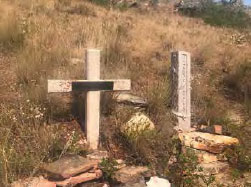
Our day wasn’t yet over and we had already agreed that we had to do this again. This was clearly a better way of meeting than a video chat blocked off for an hour on an Outlook calendar, or a chance meeting at the formal conferences we had attended in the past.
We’ve all been doing video conferences for good reasons and the cost efficiency of it has certain benefits. Unlike meeting in person, remote conferences lack strong networking opportunities, particularly with larger groups, which is a big drawback.
Instead, we dug deeper into the concept of field meetings. By bringing together a good, cohesive group with no formal agenda, we were able to have a lot of great discussions. And people need not know each other – as facilitator, Steve was the only one known to everyone in the group.
Alternatively, a modest agenda to direct conversations could easily be accommodated on a field conference. Our agenda really was dictated by the site, so fire dominated the conversation. To discuss a different issue, you might pick a site that would be better suited to the discussion, such as a wetland, active timber harvest, wood processing site or a young forest that was recently regenerated.
After lunch, we continued climbing a bit, going through a small gap, and then descending on an extensive series of switchbacks into Meriwether Canyon. Along the way we saw Hell’s Kitchen which, much to our surprise, was an overhanging cave with cool air. This was a welcome break from the heat, dust and smoke of the trail. Hiking down into Meriwether Canyon exposed us to a far greater diversity of vegetation and tree species, and there were a lot of conversations about what species were present. This inevitably led us to consider who else we should have brought along, so they could explain more about the vegetation to us.
We reached the dock at the base of Meriwether Canyon a half hour ahead of our scheduled pick up. This gave us ample time to talk some more, to cool our feet in the river, and even time for Nate to don his swim trunks and plunge in. Soon, the boat arrived to shuttle us back to the Marina, where we found a shady spot with a nice view to sip cold beers and reflect on the day. We also made plans to get the group together again, aiming for a trip like this every year.
We developed a few suggestions for normalizing the field conference format:
- Pick a site that will inform the discussion and inspire thoughtful conversation.
- Identify sites and logistics that facilitate inclusion and accessibility for diverse groups.
- Consider providing some background information about the site in advance, like a podcast or brief article.
- Keep your group small and invite people with similar interests but different backgrounds.
- Formal presentations aren’t necessary because each of you will have something to share about your work or past experiences.
- Employers should consider incorporating field meetings or conferences into their workflow as an alternative format to traditional meeting options.
- Identify gains from a day in the field that are unlikely to be accomplished in a meeting room, such as meeting educational and training objectives.
Encourage accrediting bodies such as the Society of American Foresters or various state associations to assign continuing education credits for field conferences.
As Plato may or may not have said “You can discover more about a person in an hour of play than in a year of conversation.” Our variation of this is that you can learn more from others in a day of activity than a week of lectures. Gather some colleagues, a map, and a cooler and give it a try. ♦
The Mann Gulch Fire
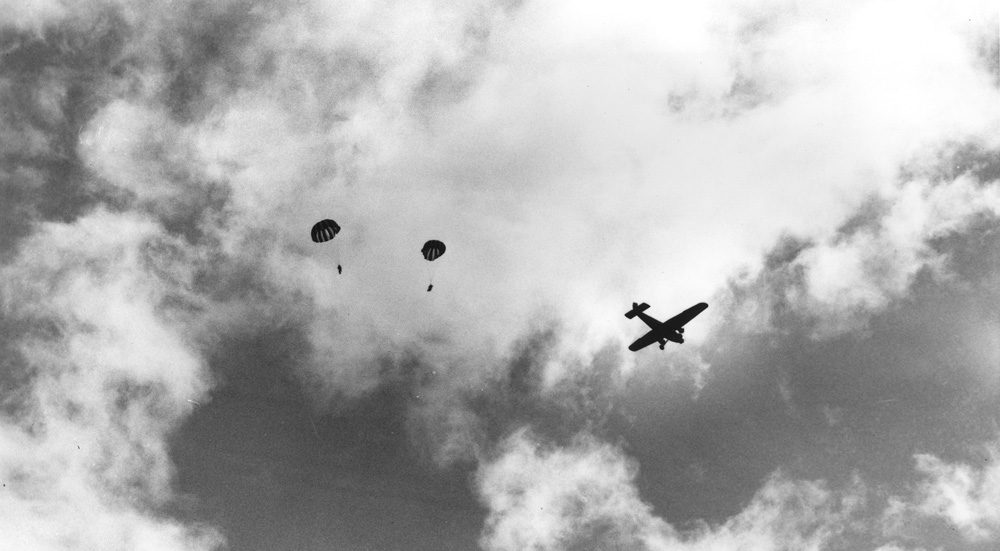
The Mann Gulch Fire was first reported around noon on August 5, 1949 in a remote part of the Helena National Forest in Montana. Fifteen smokejumpers were dispatched from the Forest Service base in Missoula, landing at 4PM about a half mile away from the fire, on the ridge at the head of the Gulch. Already on the scene was James Harrison, a Forest Service recreation guard stationed at the campground in neighboring Meriwether Canyon. Harrison had hiked over in the morning after spotting smoke rising from Mann Gulch.
The fire was initially burning on the south slope of Mann Gulch. The men began to hike down towards the Missouri River, so that they could attack the fire with the safety of the river at their backs.
However, as they hiked the winds increased and changed direction, causing the fire to suddenly expand. Fire soon blocked their path to the river. The blaze changed in character from a lower-intensity ground fire to a fast-moving crown fire as flames leapt into the canopy. By some estimates, the fire scorched 3,000 acres in ten minutes during this blow-up stage.
The men retreated, scrambling up the steep north slope of Mann Gulch, making their way through waist-high cheat grass towards the rocky ridgeline. As the fire bore down on them, crew foreman Wagner Dodge ordered the men to drop their tools to lighten their loads. The men were surprised to see Dodge pull out a match and set a small fire in front of him. He then stepped into the burned area and called to the men to join him.
The crew did not follow Dodge’s lead, and instead continued to sprint for the top of the ridge. Unfortunately, most of the men could not outrun the fire. By 6PM—less than two hours after arriving in Mann Gulch—eleven of the men were overtaken and died trying to scramble up the slope.
Two men, William Hellman and Joseph Sylvia, were badly burned but reached the ridge alive, only to die from their injuries the next day in the hospital.
Only three men survived. These included Foreman Wagner Dodge, who was sheltered from the worst of the fire in the burned area that he had created. Smokejumpers Bob Sallee and Walter Rumsey were able to run up the steep slope to the relative safety of the ridgeline.
The Forest Service responded to the disaster by implementing new safety programs for wildland firefighters, emphasizing the importance of identifying and discussing potential escape routes. They also established the Fire Science Lab in Missoula, which continues to be a source for valuable research on firefighter safety and fire behavior.
Wagner Dodge continued to work for the Forest Service for another year, but never jumped on another fire. He died five years later of Hodgkin’s Lymphoma. Bob Sallee stayed on as a smokejumper until 1951, then got a degree in forestry and joined the paper industry. He died in 2014 at the age of 82. Walter Rumsey quit the Forest Service after the Mann Gulch fire but continued on a career in natural resources. He died in a plane crash in 1980 at the age of 52.
Writer Norman Maclean grew up in Montana and had a home near Helena in Seeley Lake. After hearing about the fire, he visited Mann Gulch, only days after the fire had been extinguished. His experience there created memories that haunted him for decades. His book, Young Men and Fire, tells the story of the Mann Gulch tragedy with detail and insight into the history and culture of wildland fire management in the United States.

